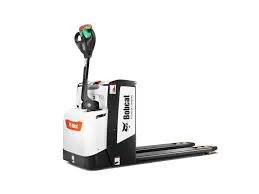


Safe Use of Chain Blocks A Comprehensive Guide
Chain blocks are essential tools in various industries, allowing for the lifting and lowering of heavy loads safely and efficiently. While they are incredibly useful, improper use can lead to accidents, injuries, and damage to equipment. Therefore, understanding the safe use of chain blocks is imperative for ensuring safety in workplaces that rely on these devices.
Understanding Chain Blocks
Chain blocks, also known as chain hoists, operate through a system of gears and chain links. When the chain is pulled, it activates the gears, which lift the load attached to the hook. They come in various capacities, with some able to lift thousands of kilograms. Because of their lifting power, chain blocks are commonly used in construction, warehouses, and manufacturing sectors.
Key Safety Practices
To maximize safety when using chain blocks, consider the following best practices
1. Always Read the Manual Each chain block comes with a manufacturer’s manual detailing its specifications, limitations, and proper usage. Understanding the guidelines provided by the manufacturer will help ensure that the chain block is used appropriately.
2. Inspect Before Use Before using a chain block, conduct a thorough inspection. Check for signs of wear, damage, or corrosion, especially on the chain, hooks, and gearbox. If any parts appear compromised, do not use the chain block until repairs or replacements are made.
3. Ensure Proper Load Capacity One of the most critical aspects of safe chain block use is adhering to the load capacity. Always check the rated capacity of the chain block and ensure that the weight of the load does not exceed this limit. Overloading can lead to equipment failure and severe accidents.

4. Use a Suitable Anchor Point When setting up a chain block, ensure that it is securely attached to a stable and robust anchor point. The anchor should be capable of supporting the weight being lifted. Avoid using makeshift anchors, as these can lead to dangerous instability.
5. Keep the Work Area Clear A cluttered workspace can be hazardous when using a chain block. Ensure the area beneath the lift is kept clear of personnel and obstacles to avoid accidents during the lifting process.
6. Utilize Personal Protective Equipment (PPE) Workers involved in lifting operations should wear appropriate PPE. Helmets, gloves, steel-toed boots, and eye protection help safeguard against potential injuries during lifting tasks.
7. Employ Correct Lifting Techniques Educate all operators on proper lifting techniques. This includes using a smooth and steady motion when lifting or lowering loads, avoiding jerky movements, and ensuring that the load is balanced before lifting.
8. Never Work Under a Suspended Load It is crucial to avoid working directly under a load that is being lifted. If the load were to drop for any reason, it could cause severe injury or death. Always position machinery and personnel away from the path of the load.
9. Regular Maintenance Implement a regular maintenance schedule for all chain blocks. This will help identify and rectify issues before they escalate into dangerous situations. Routine checks by qualified personnel are essential to ensure the longevity and safe operation of the equipment.
10. Training and Certification Operators of chain blocks should receive proper training and certification. Understanding the mechanics of the device and practicing safe operating procedures are vital for reducing risks in the workplace.
Conclusion
While chain blocks are invaluable tools that enhance productivity across various industries, safety should never be compromised. By adhering to the best practices outlined above, employers and workers can significantly minimize risks associated with their use. Safe operation not only protects personnel but also ensures the integrity and longevity of the equipment. As industries continue to rely on heavy lifting, fostering a culture of safety will ensure that operations run smoothly and efficiently, safeguarding the most valuable asset of any organization its people.



